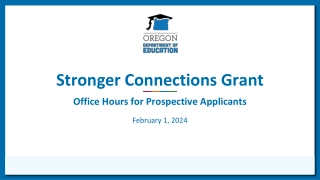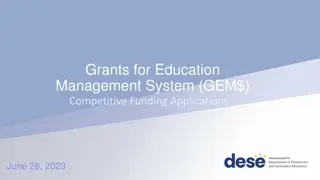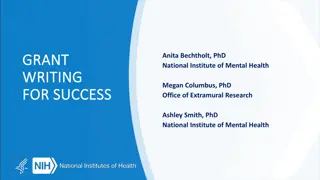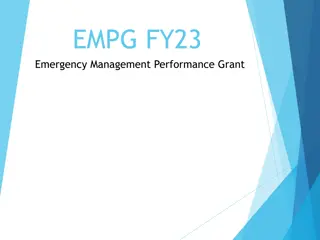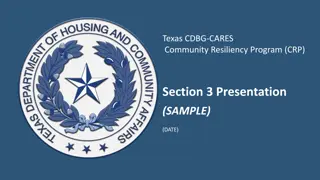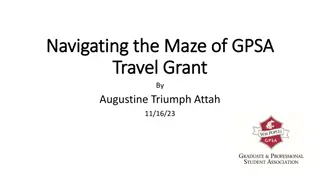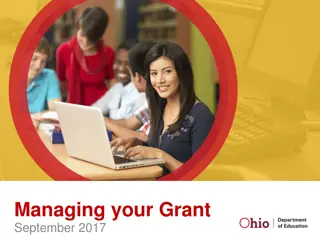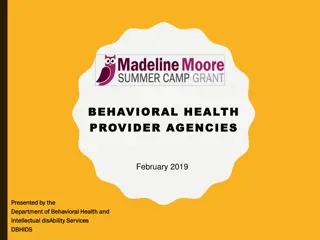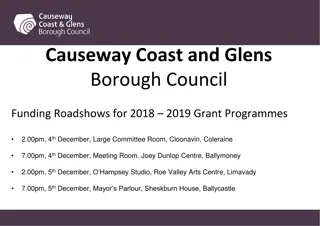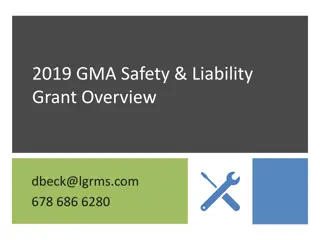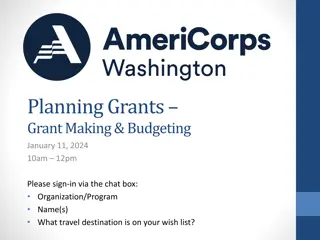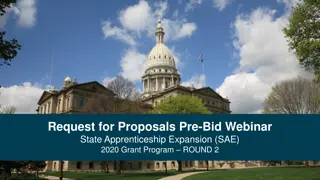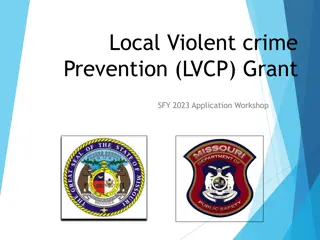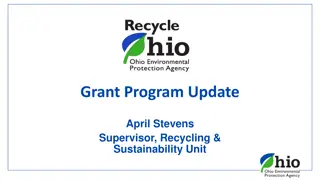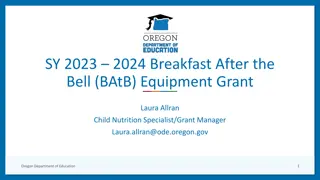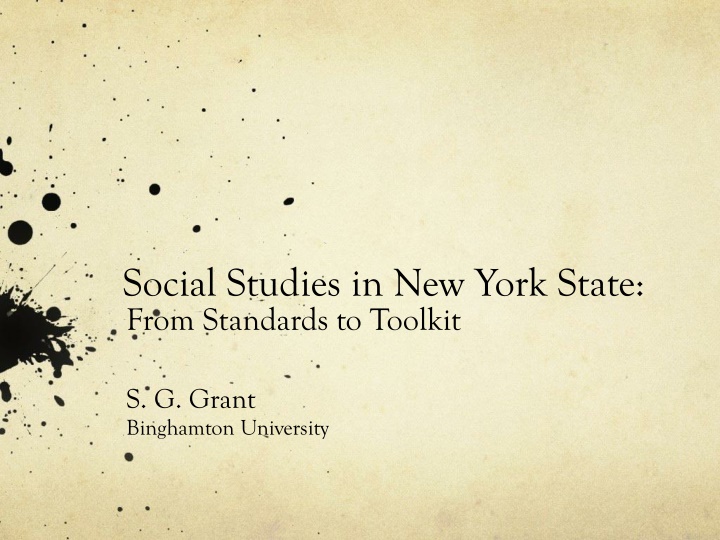
Revolutionizing Social Studies Education in New York State
Discover the shift in social studies education in New York State, moving from content-heavy instruction to a more practical and engaging approach. Explore the challenges faced, the emergence of new frameworks, and the emphasis on inquiry-based learning for better student engagement and understanding.
Download Presentation

Please find below an Image/Link to download the presentation.
The content on the website is provided AS IS for your information and personal use only. It may not be sold, licensed, or shared on other websites without obtaining consent from the author. If you encounter any issues during the download, it is possible that the publisher has removed the file from their server.
You are allowed to download the files provided on this website for personal or commercial use, subject to the condition that they are used lawfully. All files are the property of their respective owners.
The content on the website is provided AS IS for your information and personal use only. It may not be sold, licensed, or shared on other websites without obtaining consent from the author.
E N D
Presentation Transcript
Social Studies in New York State: From Standards to Toolkit S. G. Grant Binghamton University
Social Studies on the Rebound Despite seeming to be left behind, state and national efforts on behalf of social studies are emerging: College, Career, and Civic Life (C3) Framework for Social Studies State Standards New York State K-12 Social Studies Framework
But this is challenging work Social studies curriculum is plagued by too much content Social studies instruction is dominated by a view that we have to teach every person, place, and event before we ask students to make sense of it. Social studies standards rarely translate into useable curriculum and present challenges for state-level assessments
Wither social studies no more The College, Career, and Civic Life (C3) Framework for Social Studies State Standards The New York State K-12 Social Studies Framework and now The New York State K-12 Social Studies Resource Toolkit and Professional Development project
The intellectual heart of the the C3 Framework Jerome Bruner We begin with the hypothesis that any subject can be taught effectively in some intellectually honest form to any child at any stage of development The Process of Education
The pedagogical heart of the C3 framework--The Inquiry Arc Dimension 1: Developing Questions and Planning Inquiries Dimension 2: Applying Disciplinary Concepts and Tools (Civics, Economics, Geography, and History) Dimension 3: Evaluating Sources and Using Evidence Dimension 4: Communicating Conclusions and Taking Action
New York State K-12 Social Studies Framework
Bridging standards and practice The New York State K-12 Social Studies Resource Toolkit and Professional Development project bridges the NYS Framework for Social Studies and teachers classroom practice.
The Toolkit Project Who S. G. Grant, Kathy Swan, John Lee, and Jean Dorak Project Management Team 14 Teacher Writers 42 Teacher Collaborative Council 18 Content and Pedagogical Reviewers 25 Content Advisory Panel members
The Toolkit Project What and When Conceptual Foundations September 2014- April 2015 Grade-Level Curriculum Inquiries 14 Annotated Inquiries and 70 Abridged Inquiries/July 2014-August, 2015 Professional Learning Resources Classroom, District, and State-Level/July 2014-August 2015
The Toolkit Project Where EngageNY (https://www.engageny.org) C3 Teachers (http://www.c3teachers.org/)
The Toolkit Project Why Because the Common Core-ELA is necessary, but not sufficient Because translating standards into practice is challenging work And because we need a new approach to teaching and learning social studies
A new approach for social studies In content-rich subjects, traditionally it has been facts first, thinking later and it hasn t worked. * * * * * The C3 Inquiry Arc starts with thinking with a purpose answering a compelling question
Compelling questions Characteristics of compelling questions: Set the opening frame for an inquiry Express the intellectual rigor and student relevance of an inquiry Set up the summative performance task
Crafting compelling questions Intellectually rigorous Relevant to students
Intellectually rigorous A compelling question: Reflects an enduring issue, concern, or debate in the field Demands the use of multiple disciplinary lenses and perspectives
Relevant to students A compelling question: Reflects one or more qualities or conditions that we know children care about Honors and respects children s intellectual efforts
Compellingor not so compelling? Where are we? What were the causes of the Industrial Revolution? Why is Albany the capital of New York? Can Canada and the US be friends forever? Who won the Cold War? Who are our community helpers? What s the deal with hair?
Your turn Choose a grade level and a topic and draft a compelling question or two Examples: Kindergarten---Rules Grade 7 Civil War Grade 10---Globalization
If questions matter, so do assessments
What do we want to know about what kids know? Content Knowledge Conceptual Knowledge Skills: Disciplinary Skills Inquiry Skills Literacy Skills Technology Skills
Assessment is limited by.. Ability to communicate (visually, orally, in written form); Age and experience with task; Engagement in the task; Context (hungry, tired, distracted, etc.); The assessment itself (What does it intend to measure? What can it actually tell us? Is it valid?) However, teachers still need to assess.
Assessments Summative Performance Tasks Formative Performance Tasks Taking Informed Action
Summative performance task Write an argument that addresses the compelling question (Did Reconstruction Really Free African Americans?) using specific claims and relevant evidence from historical sources while acknowledging competing views.
Your turn Write a Summative Performance Task for your Compelling Question
Taking informed action Understand the problem Assess options for action Apply and take action
What action can look like Organizing a boycott Community Organizing a fundraising event for an issue/cause Letter to government official Level of Public Exposure Circulating a petition School newspaper editorial School Organizing a school assembly Bringing stakeholders together for a classroom forum. Identifying the problem(s) and possible civic action(s) Classroom Class presentation Research issue relevant to Inquiry Conversation with classmate Understand Problem Apply Action Assess Options Complexity of the Effort
Does where you live matter? Understand: Brainstorm a list of opportunities and constraints in area neighborhoods and community. Assess: Discuss how individuals and communities can turn constraints into opportunities. Act: Arrange for a local official to visit the class to review the class conclusions and discuss possible community actions.
Your turn Develop a set of Taking Informed Action activities following from your Compelling Question
The Compelling Question and Summative Assessment Task bookend the inquiry The Supporting Questions, the Formative Performance Tasks, and the Sources form the middle.
Supporting questions Support and extend the Compelling Question Represent the disciplinary knowledge desired Reflect the sources selected Inspire formative assessments
Did Reconstruction Really Free African Americans? SQ 1--How did Fredrick Douglass define freedom before and during the Civil War? SQ 2--How effective were Reconstruction policies in establishing freedom for African Americans? SQ 3--How did developments in the South impact the freedom of African Americans?
Formative performance tasks Connect sources to Supporting Questions Help students build their emergent understandings Contribute to students abilities to respond to the Summative Performance Task.
Did Reconstruction Really Free African Americans? FPT1--Write a paragraph response to the supporting questions FPT2--Engage in a structured discussion about the supporting question FPT3--List evidence that supports, revises, or challenges opinions about Reconstruction policies and African American freedom.
Sources Generate curiosity in the content that lies behind the inquiry Offer students opportunities to build knowledge and skills around gathering, using, and interpreting evidence Enable students to respond to Formative Performance Tasks and to the Summative Performance Task
SQ 1--How did Fredrick Douglass define freedom before and during the Civil War? Source excerpts from the following: Narrative of the Life of Frederick Douglass an American Slave, Written by Himself, 1845 What the Black Man Wants, speech given by Frederick Douglass in 1865
SQ 3--How did developments in the South impact the freedom of African Americans? Source excerpts from the following: Caroline Richardson narrative, 1937. Federal Writers Project Slave Narratives: A Folk History of Slavery in the United States from Interviews with Former Slaves, Louisiana Black Code, 1865 Statement from George Smith excerpt from Statements of Outrages upon Freedmen in Georgia, 1870
Your turn Draft a Supporting Question, Format Performance Task, and 1-2 Sources that support your Compelling Question
Why inquiries rather than units Inquiries are not fully-developed content units or modules Inquiries enable pedagogical coherence An inquiry need not necessarily cover an entire key idea A Key Idea (e.g., Native Americans in New York) may necessitate several inquiries Teacher expertise and agency is key
Outline of the project This fall Publishing the Field Guide August-October Refining, reviewing, piloting, and revising the POC inquiries and the Conceptual Foundations November-February Developing additional annotated and abridged inquiries; piloting inquiries March-May Revising annotated inquiries August Publishing the Toolkit

